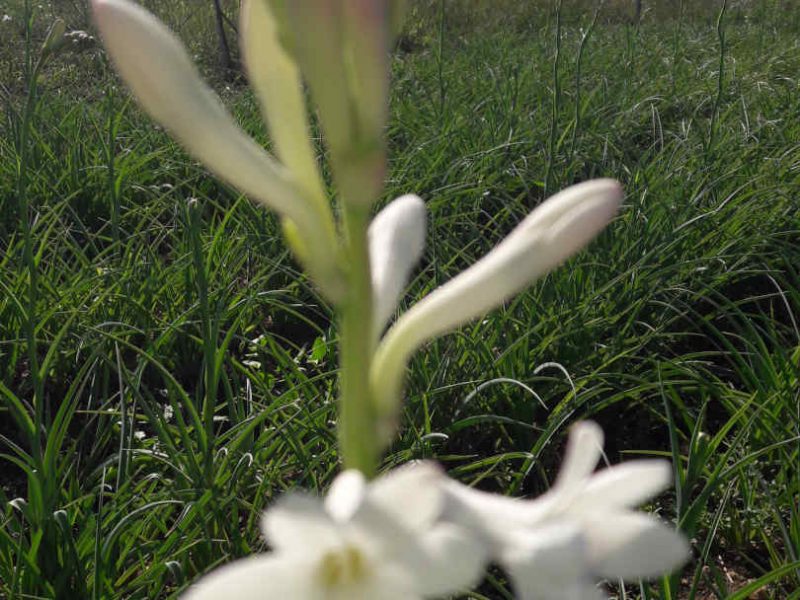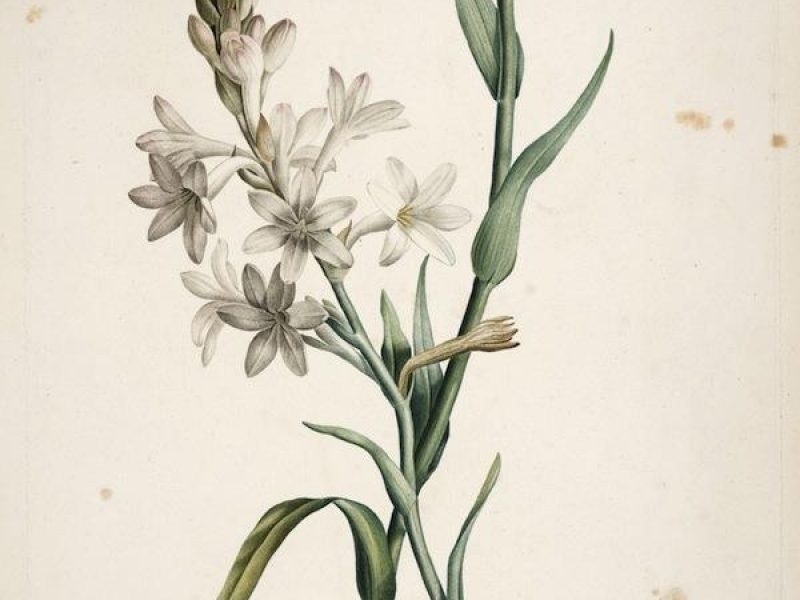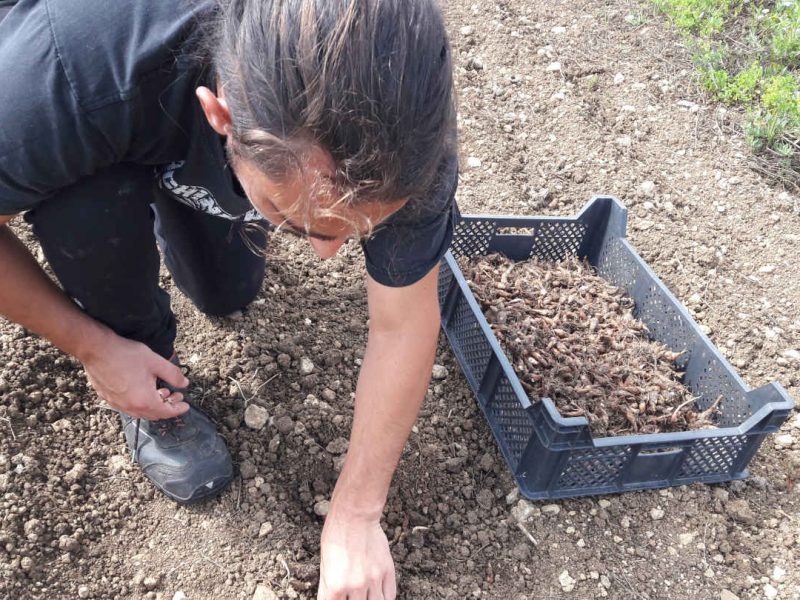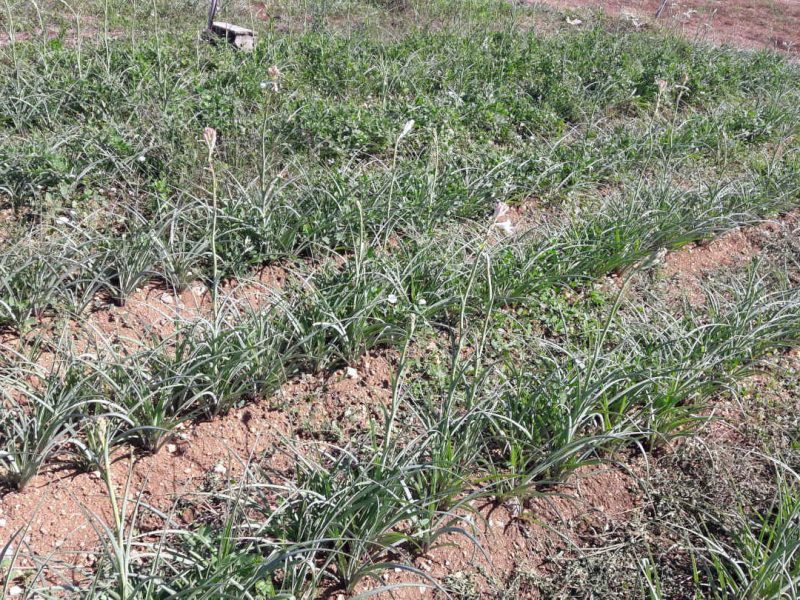The tuberose
Today, we are talking to you about this white flower which has come back “in fashion” in the perfume industry in recent years and which we have planted in the countryside near our gites www.locations-06.fr.
A hypnotic and tempting flower, tuberose is surrounded by many legends. Polianthes tuberosa L. (from the Greek poly = several and anthos = flowers), also called Indian Hyacinth, is a bulbous herbaceous perennial plant, first classified among the Agavaceae family and more recently among the Asparagaceae. Tuberoses flower in summer and early fall. Grouped in clusters along tall stems, the starry, tubular white flowers are thick and waxy. They open in the evening and then distill an extraordinary perfume of which the growers are the first beneficiaries.
Originally, tuberose flowers had 6 petals, as evidenced by old engravings and botanical plates. The tuberoses grown today, the most common variety of which is La Perle, have several stacks of rows of petals, the number of which can be up to 24.

What are the origins of tuberose? When did she arrive in Europe?
Originally from Mexico, it was imported to Europe in the 16th century. The very first bulb was reported in 1530 by a French missionary, and the flower began to be cultivated in Grasse in the 17th century, then its cultivation was abandoned.
Today it is mainly cultivated in India, Egypt, Morocco, the Comoros and China, because it needs heat and humidity.
In Pays de Grasse, at the request of manufacturers who must themselves meet the demands of major brands, perfume flower growers have replanted a little next to their rose and jasmine fields.
In Grasse it was Mr. Constant Viale who reintroduced the flower and who devoted 15 years of his life to it.
From flower to Grasse absolute
According to the classification of flowers according to their colors and their odorous qualities, “white flowers are the most fragrant and the most pleasant to the smell”. Indeed, tuberoses are among the most fragrant plants in the plant world. Their heavy, heady scent becomes even more intense after sunset. Tuberose flowers also have this particularity, common to jasmine, of producing an odorous substance one or two days after being picked.
When we smell a fresh tuberose flower, we discover an odor partly comparable to that of other white flowers such as orange blossom, jasmine or ylang-ylang, except that it is more “severe” and creamier.
How are perfumes produced from tuberose?

To extract the smell, two techniques can be used. Since heat destroys or alters the odorous substances of tuberose flowers, the technique of cold enfleurage was formerly used, which consists of placing the fresh flowers on a layer of purified animal or vegetable fat on large wooden frames.
The flowers were renewed every day or every other day throughout the harvest period until the fat was saturated with the fragrant substance.
It was then washed with a volatile solvent which was then evaporated, leaving only the absolute usable in perfumery. However, this technique requires time and a lot of labor.
Today, we therefore more commonly use the volatile solvent extraction technique, formerly called “dissolution”.
But, there are still some perfumers like Sonia Godet, perfume creator in Saint Paul de Vence, very concerned about the quality of their products, the natural appearance, and not wishing to use petrochemical products which at present still make enfleurage with tuberose flower and jasmine flower.
The result obtained is a very heady note, rather green at first, it evolves towards a milky and solar roundness, reminiscent of a coconut effect. Tuberose is notably used in the composition of Poison, a perfume created in 1985 for the Christian Dior perfume house. Narcisse Noir by Caron, created in 1911 by Ernest Daltroff, and Fracas by Robert Piguet, composed in 1948 by Germaine Cellier, can be considered precursors of the tuberose note in perfumery. Giorgio by Giorgio Beverly Hills (1981), Tubéreuse Criminelle by Serge Lutens (1999), Fragile by Jean Paul Gaultier (1999), and Carnal Flower by Éditions de Parfums Frédéric Malle (2005) are representatives.
Other uses of tuberose, or: to seduce or scare away
In Hindi, tuberose is known as ‘rajni gandha’ and is nicknamed ‘night perfume’. It is used for decoration, especially at weddings. It is worn as a necklace, in the hair, and is commonly present in temples.
Among historical anecdotes, it is said that Madame de La Vallière, mistress of Louis XIV, had bouquets of tuberoses placed in her room. Indeed, tuberose was thought to bother pregnant women, and she wanted to prove to the queen that she was not pregnant. Finally, in Italy, young girls were forbidden to walk in the evening in the gardens where tuberose grew, because they would not have been able to resist the young men, themselves intoxicated by its erotic perfume.
Finally, our friend Yves Terrillon, a chef passionate about cooking with flowers, uses them to flavor delicious tagliatelle.










